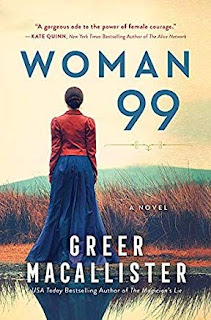Not because he was born or died on this day, but because for the first time in American history, in 1963, a sitting president--Jack Kennedy--signed a proclamation conferring honorary American citizenship to the subject of another nation: Winston Churchill.
Jack described Winston as "a son of America," referring to his New York-born mother, Jennie Jerome Churchill. His son Randolph, and grandson Winston, accepted the honor for him at the White House, as Churchill was too infirm to travel.
 |
| Joe, Kick, and Jack Kennedy entering the House of Commons Sept. 3, 1939, for Britain's declaration of war |
 I love this moment in time, because it conjures for me an association of so many ideas. As Francine Mathews, I wrote a novel entitled JACK 1939 a few years back, exploring the period when Jack Kennedy first met Winston Churchill--during the six months leading up to World War II, when Jack's father, Joseph P. Kennedy, served as American Ambassador to the Court of St. James. Jack's sister Eunice was a debutante along with Sarah Spencer-Churchill, daughter of Winston's cousin, the Duke of Marlborough, and the five elder Kennedy kids--Joe, Jack, Rosie, Kick, and Eunice, along with their parents, attended Sarah's incomparable coming-out ball July, 1939, at Blenheim Palace. Sarah would eventually marry an American naval officer.
I love this moment in time, because it conjures for me an association of so many ideas. As Francine Mathews, I wrote a novel entitled JACK 1939 a few years back, exploring the period when Jack Kennedy first met Winston Churchill--during the six months leading up to World War II, when Jack's father, Joseph P. Kennedy, served as American Ambassador to the Court of St. James. Jack's sister Eunice was a debutante along with Sarah Spencer-Churchill, daughter of Winston's cousin, the Duke of Marlborough, and the five elder Kennedy kids--Joe, Jack, Rosie, Kick, and Eunice, along with their parents, attended Sarah's incomparable coming-out ball July, 1939, at Blenheim Palace. Sarah would eventually marry an American naval officer.Naturally, Winston was also there, watching the Young People jitterbug in the Long Library.
Jack was a junior at Harvard when he took six months' leave of absence to travel through Europe from February to October, 1939. He was intent upon researching his senior thesis, entitled "Why England Slept," which you can still read in the archives of the Kennedy Library--along with his thesis advisors' comments. Twenty-one-year-old Jack traveled alone, on a diplomatic passport, from London to Moscow and everywhere in between, as Hitler invaded Czechoslovakia and prepared to invade Poland. Churchill was not yet Prime Minister, but his was the strongest Conservative party voice against appeasement. Jack's father, U.S. Ambassador Joseph P. Kennedy, supported Neville Chamberlain's policies of conciliating Hitler. But did Jack?
There are fascinating letters held in Kennedy archive in the months following Britain's entry into war in which Jack counsels his father gently but firmly that his isolationist views are out of step with the times. It's my hunch that his extensive travel and information collecting during 1939, as well as his numerous British friends (among them Randolph Churchill's wife, Pamela, and Kick Kennedy's eventual husband, Billy Hartington, heir to the Duke of Devonshire) influenced the development of Jack's views.
On Winston Churchill Day, I'd like to share one of Win's quotations--which I like to think betrays his mother, Jennie's, influence:
"Live dangerously, take things as they come; dread naught, all will be well."

















































